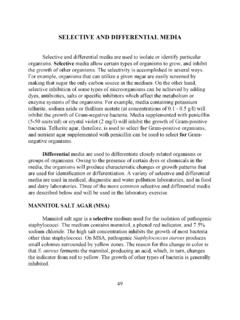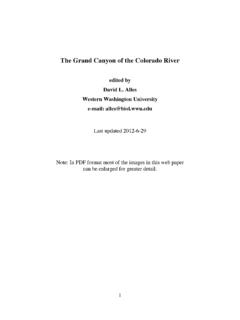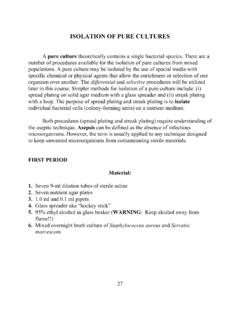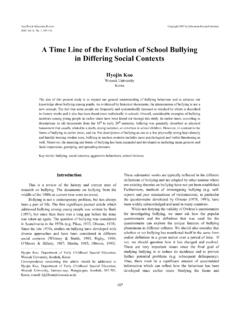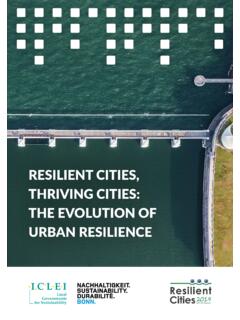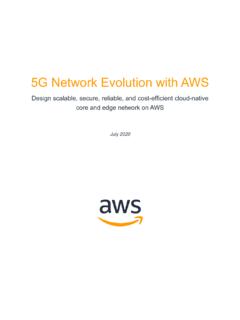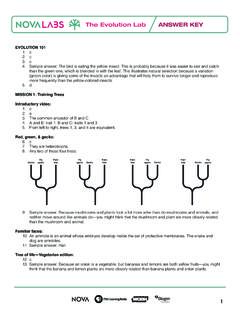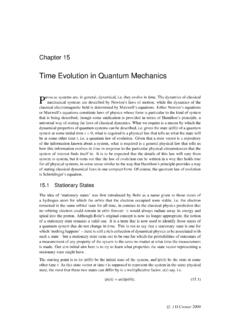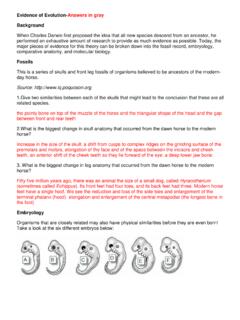Transcription of The Evolution of the Universe - Western Washington University
1 1 The Evolution of the Universe edited by David L. Alles Western Washington University e-mail: Last Updated 2013-7-14 Note: In PDF format most of the images in this web paper can be enlarged for greater detail. 2 If being educated means having an informed sense of time and place, then it is essential for a person to be familiar with the scientific aspects of the Universe and know something of its origin and structure. Project 2061, American Association for the Advancement of Science ---------------------------- "The effort to understand the Universe is one of the very few things that lifts human life a little above the level of farce, and gives it some of the grace of tragedy." Steven Weinberg Steven Weinberg is winner of the Nobel Prize in Physics in 1979, and author of the book "The First Three Minutes". 3 Introduction Science at the beginning of the twenty-first century can make some bold, yet simple observations: 1) the Universe has evolved; 2) we are a result of that Evolution .
2 We are the first generation of human beings to glimpse the sweep of cosmic history, from the Universe 's fiery origin in the Big Bang to the silent, stately flight of galaxies through the intergalactic night. (National Research Council) Order in the Universe Cosmology is the study of the Evolution of the Universe from its first moments to the present. In cosmology the most fundamental question we can ask is: Does our Universe have intelligible regularities that we can understand is it ordered? This question lies at the heart of the scientific revolution beginning in the sixteenth century. That revolution began with the discoveries by Copernicus, Galileo, and Newton of order in our world. Today our scientific understanding of nature s order has reached a critical threshold. Only now can we begin to piece together a coherent picture of the whole.
3 Only now can we begin to see the deep order of our Universe . The Evolution of the world can be compared to a display of fireworks that has just ended; some few red wisps, ashes and smoke. Standing on a cooled cinder, we see the slow fading of the suns, and we try to recall the vanishing brilliance of the origin of the worlds. Abb Georges Lema tre We now understand the order in our world by using the standard Hot Big Bang model of the Evolution of the Universe . The four key observational successes of the model are: The Expansion of the Universe Nucleosynthesis of the light elements Origin of the cosmic background radiation Formation of galaxies and large-scale structure The Big Bang model makes accurate and scientifically testable hypotheses in each of these areas, and the remarkable agreement with the observational data gives us considerable confidence in the model.
4 4 Lema tre with Einstein Abb Georges Edouard Lema tre (1894 -1966) was a Belgian astrophysicist and Priest who developed an evolving cosmological model which indicated that the Universe had begun in a "Big Bang." Einstein's theory of general relativity, announced in 1916, had led to various cosmological models, including Einstein's own model of a static Universe . Lema tre in 1927 (and, independently, Alexander Friedmann in 1922) discovered a family of solutions to Einstein's field equations of relativity that described not a static but an expanding Universe . This idea of an expanding Universe was demonstrated experimentally in 1929 by Edwin Hubble who was unaware of the work of Lema tre and Friedmann. Lema tre's model of the Universe received little notice until Eddington arranged for it to be translated and reprinted in 1931. It was not only the idea of an expanding Universe which was so important in Lema tre's work, on which others were soon working, but also his attempt to think of the cause and beginning of the expansion.
5 If matter is everywhere receding, it would seem natural to suppose that in the distant past it was closer together. If we go far enough back, argued Lema tre, we reach the "primal atom", a time at which the entire Universe was in an extremely compact and compressed state. He spoke of some instability being produced by radioactive decay of the primal atom that was sufficient to cause an immense explosion that initiated the expansion. 5 George Gamow (1904-1968) Lema tre's Big-Bang model did not fit well with the available time scales of the 1930s. Nor did he provide enough mathematical detail to attract serious cosmologists. Its importance today is due more to the revival and revision it received at the hands of George Gamow and Ralph Alpher in 1948. Web Reference for George Gamow: For an excellent history of the development of the Big Bang theory see: Big Bang: The Origin of the Universe by Simon Singh (2004).
6 6 The Expansion of the Universe (1993) As bizarre as it may seem, space itself is expanding specifically, the vast regions of space between galaxies. According to Einstein, space is not simply emptiness; it's a real, stretchable, flexible thing. The notion that space is expanding is a prediction of Einstein's theory of gravity, which describes a simple but universal relationship between space, time, and matter. In the late 1920's, the astronomer Edwin Hubble first observed that distant galaxies are moving away from us, just as would be expected if the space between galaxies were growing in volume and just as predicted by Einstein's theory of gravity. Since then, astronomers have measured this recession for millions of galaxies. 7 Galaxy NGC 3370, a spiral galaxy like our own Milky Way The galaxies sit more or less passively in the space around them.
7 As the space between galaxies expands, it carries the galaxies further apart like raisins in an expanding dough. However, the Universe is a chaotic place and the gravity from one galaxy, or from a group of galaxies, may disturb the motion of its near neighbors, causing them to collide. But on average, when you compare two large enough chunks of space, the galaxies in one are moving away from the galaxies in the other. Amazingly, space is not actually expanding "into" anything. Put another way, a given region of space doesn't actually "push" the rest of the Universe out of the way as it expands. Web Reference 8 (The following essay is from the Universe Forum produced for NASA by the Harvard Smithsonian Center for Astrophysics in 2004.) The Big Bang Theory The Big Bang is actually not a "theory" at all, but rather a scenario or model about the early moments of our Universe , for which the evidence is overwhelming.
8 It is a common misconception that the Big Bang was the origin of the Universe . In reality, the Big Bang scenario is completely silent about how the Universe came into existence in the first place. In fact, the closer we look to time "zero," the less certain we are about what actually happened, because our current description of physical laws do not yet apply to such extremes of nature. The Big Bang scenario simply assumes that space, time, and energy already existed. But it tells us nothing about where they came from or why the Universe was born hot and dense to begin with. But if space and everything with it is expanding now, then the Universe must have been much denser in the past. That is, all the matter and energy (such as light) that we observe in the Universe would have been compressed into a much smaller space in the past. Einstein's theory of gravity enables us to run the "movie" of the Universe backwards , to calculate the density that the Universe must have had in the past.
9 The result: any chunk of the Universe we can observe no matter how large must have expanded from an infinitesimally small volume of space. By determining how fast the Universe is expanding now, and then "running the movie of the Universe " backwards in time, we can determine the age of the Universe . The result is that space started expanding billion years ago. This number has now been experimentally determined to within 1% accuracy. It's a common misconception that the entire Universe began from a point. If the whole Universe is infinitely large today (and we don't know yet), then it would have been infinitely large in the past, including during the Big Bang. But any finite chunk of the Universe such as the part of the Universe we can observe today is predicted to have started from an extremely small volume. Part of the confusion is that scientists sometimes use the term " Universe " when they're referring to just the part we can see "the observable Universe ".
10 And sometimes they use the term Universe to refer to everything, including the part of the Universe beyond what we can see. It's also a common misconception that the Big Bang was an "explosion" that took place somewhere in space. But the Big Bang was an expansion of space itself. Every part of space participated in it. For example, the part of space occupied by the Earth, the Sun, and our Milky Way galaxy was once, during the Big Bang, incredibly hot and dense. 9 The same holds true of every other part of the Universe we can see. We observe that galaxies are rushing apart in just the way predicted by the Big Bang model. But there are other important observations that support the Big Bang. Astronomers have detected, throughout the Universe , two chemical elements that could only have been created during the Big Bang: hydrogen and helium. Furthermore, these elements are observed in just the proportions (roughly 75% hydrogen, 25% helium) predicted to have been produced during the Big Bang.

